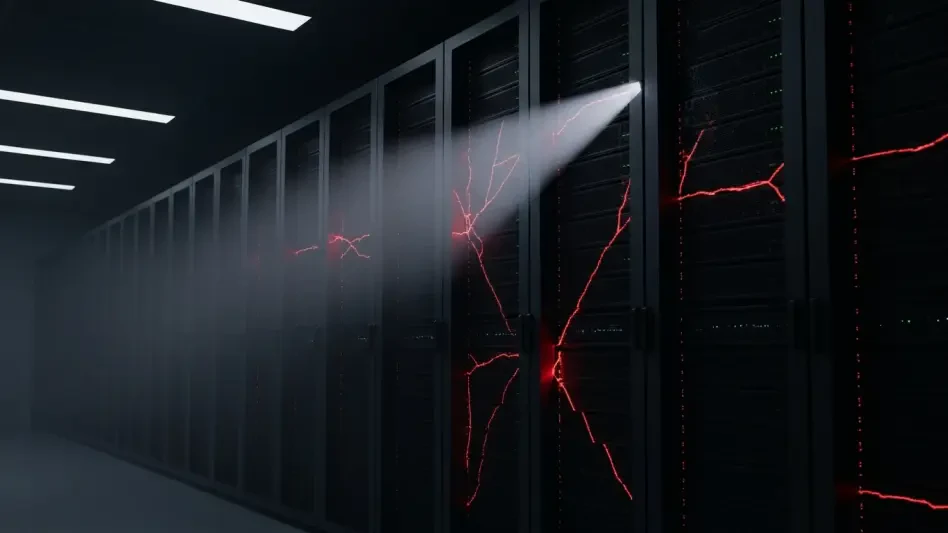The recent surge in cyberattacks targeting vulnerabilities in Microsoft SharePoint servers has highlighted the critical need for fortified cybersecurity defenses. Over 400 organizations, including pivotal U.S. federal agencies, have fallen victim to these incidents, underscoring the global threat posed by zero-day exploits and the sophistication of cyber threat actors. The discovery of zero-day vulnerabilities in SharePoint servers sent ripples through cybersecurity circles, as experts grappled with the implications and devised countermeasures. Understanding these vulnerabilities and their exploitation by adept attackers remains paramount in shielding vital digital infrastructures from sinister forces.
The Nature of SharePoint Vulnerabilities
Unveiling the Exploit’s Genesis
The cyber landscape saw a significant turnaround with the identification of new vulnerabilities in Microsoft SharePoint servers, specifically CVE-2025-53770 and CVE-2025-53771. These vulnerabilities are extensions of previously addressed flaws, CVE-2025-49706 and CVE-2025-49704. While these earlier flaws had been fixed, the emergence of new variants brought unforeseen challenges. Cyber adversaries showcased remarkable ingenuity by creating an exploit chain termed “ToolShell,” enabling attackers to bypass defensive multi-factor authentication systems and single sign-on processes. This breach allowed unrestricted access to SharePoint resources and facilitated remote code execution, diminishing traditional barriers to entry.
The repercussions of these vulnerabilities were widespread, affecting over 400 organizations, including notable victims like the Departments of Energy, Homeland Security, and Health and Human Services. Federal agencies were particularly vulnerable due to sophisticated attack strategies aimed at breaching their internal networks. A disturbing revelation was the attack’s precision targeting of the California Independent System Operator, responsible for managing the state’s wholesale electric grid. The breach raised alarms, prompting cybersecurity experts to dissect the exploit’s anatomy to aptly counter impending attacks. With the exploit’s escalation, insights into attack patterns became crucial for preventive measures.
Attacker Profiles and Motives
In-depth investigations into these attacks revealed the sophisticated involvement of threat actors with varying objectives. Microsoft Threat Intelligence identified key players like Storm-2603, a China-based entity, which employed the Warlock ransomware following the exploits. Ransomware deployment formed part of a broader post-exploit strategy observed in compromised environments. The involvement of government-affiliated groups such as Linen Typhoon, known for intellectual property theft, and Violet Typhoon, recognized for espionage activities, highlighted the variations in attacker profiles. These groups, under Microsoft’s classification ‘Storm,’ demonstrated distinctive methodologies, aligning with specific cyber goals.
The strategy employed by Storm-2603 included manipulation of policy settings to facilitate Warlock ransomware’s widespread distribution. This approach aimed to inflict maximal disruption while simultaneously extracting value from compromised networks. Another alarming practice observed was the attempted theft of cryptographic keys, which, if successful, could ensure attackers’ persistent access even after subsequent security patches were applied. The attack vector underscored a pressing need for comprehensive cybersecurity defenses and continuous monitoring to preemptively identify impending threats and safeguard sensitive data from unauthorized access.
Cybersecurity Response and Mitigation
Federal Actions and Collaborative Efforts
Federal agencies swiftly mobilized resources in response to the threat posed by SharePoint vulnerabilities. The Cybersecurity and Infrastructure Security Agency (CISA), part of the Department of Homeland Security (DHS), launched a coordinated national response. This included rapid dissemination of alerts and tailored updates to affected entities, urging them to adopt mitigation strategies. Collaboration with Microsoft ensured informed intelligence sharing and the formulation of robust countermeasures. Understanding the severity of the new vulnerabilities, CISA added CVE-2025-53770 to its catalog of known exploited vulnerabilities, alongside CVE-2025-49704 and CVE-2025-49706.
Proactive efforts by CISA aimed to reduce exposure and prevent further breaches in organizational and governmental networks. Despite the complexity of the exploit, federal agencies mitigated immediate threats successfully. Neither the Department of Homeland Security nor its components reported data exfiltration. Similarly, the Department of Energy noted minimal disruption due to reliance on cloud solutions like Microsoft 365, which offered robust protective measures. Investigations continued across departments to delineate potential exposure areas, ensuring informed strategies for shielding vital assets from future incursions.
Impact Analysis and Continued Vigilance
Organizations across various sectors reevaluated their cybersecurity postures to address vulnerabilities and prevent further exploitation. The incident’s expansive reach illustrated a targeted trend against U.S.-based entities, necessitating heightened cybersecurity vigilance. ESET’s telemetry data revealed that U.S. organizations accounted for a significant portion of total intrusions, reinforcing insights into adversaries’ strategic focus. Analysis by the Shadowserver Foundation revealed approximately 11,000 SharePoint instances remained susceptible to internet threats, furthering the urgency for comprehensive defense mechanisms.
State-level vigilance played a crucial role in maintaining operational continuity amidst the threat. California’s Independent System Operator closely monitored the situation, affirming no disruptions in market function or grid reliability. This demonstrated the importance of prompt identification and response measures to maintain critical infrastructure security. Internationally, affected entities strengthened cross-sector collaboration to share threat intelligence and fortify defenses effectively. This interconnected approach became vital in countering sophisticated attack methodologies and protecting against potential follow-on incursions.
Future Strategies and Cybersecurity Enhancement
Strengthening Defenses and Anticipating Threats
The ongoing vulnerability crisis revealed essential insights into the dynamic nature of cybersecurity landscapes. Organizations recognized the necessity of integrating advanced threat detection mechanisms to preemptively identify potential risks. Focus shifted toward enhancing patch management systems to address vulnerabilities swiftly and reduce exposure times. Considering hackers’ penchant for chaining vulnerabilities for strategic gains, cybersecurity protocols underwent rigorous assessment to bolster defenses against multifaceted exploit scenarios. Cross-sector cooperation became increasingly vital to support information sharing and foster resilience against sophisticated threats.
Investment in cybersecurity training emerged as a pivotal measure in strengthening threat response capabilities. Cultivating a skilled workforce equipped with knowledge of both current and emerging threat landscapes offered strategic advantages in navigating cybersecurity landscapes. Development of incident response strategies focused on curtailing attack vectors swiftly, ensuring prompt detection and mitigation. By anticipating adversary motives and employing comprehension of vulnerabilities, organizations devised robust methodologies to protect critical digital and operational assets.
Shaping Future Cyber Policies
The recent increase in cyberattacks targeting Microsoft SharePoint server vulnerabilities has highlighted the urgent need for enhanced cybersecurity measures. More than 400 organizations, including significant U.S. federal agencies, have been affected by these cyber incidents. This underscores the widespread threat posed by zero-day exploits and the increasing sophistication of cyber attackers. The discovery of previously unknown vulnerabilities in SharePoint servers sent shockwaves through the cybersecurity community. As experts scrambled to understand the implications and develop solutions, they recognized the importance of this knowledge in defending digital infrastructures against malicious forces. As cybercriminals grow more adept at exploiting these weaknesses, ensuring robust defenses becomes increasingly critical. The escalating frequency and complexity of these attacks demand that organizations stay vigilant, strengthening their cybersecurity frameworks to protect sensitive data. Addressing these challenges is vital in safeguarding information against an ever-evolving cyber threat landscape.








